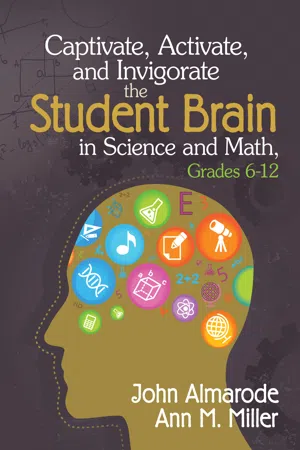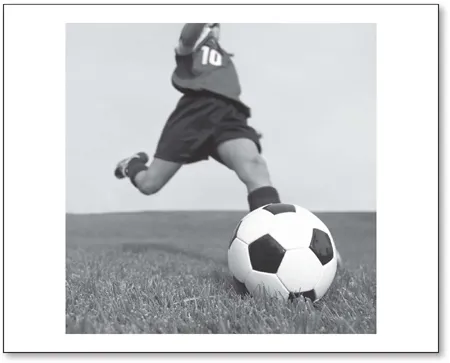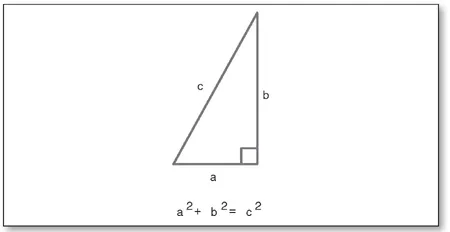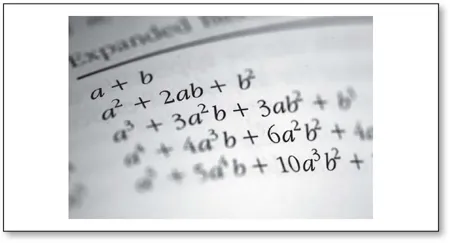![]()
1
The Recipe for an Engaged Brain
Every weekday morning without fail, we climb out of bed, after striking the snooze button on the alarm clock the maximum allowable number of times, and prepare ourselves for an often unpredictable, but ultimately rewarding, day as an elite group of professionals dedicated to the development and achievement of all students. We are teachers. Our important and carefully scripted morning routine serves as a necessary process to ready ourselves for the action-packed day of “reading, writing, and arithmetic.” Reading teachers are revving up for a day of context clues, inferences, and reading comprehension. For writing teachers, distinguishing between active and passive voice may be on the agenda. Physical education teachers, music teachers, and art teachers prepare to construct classroom experiences that promote wellness and creative expression. As mathematics and science teachers, we passionately prepare to pass along the great ideas of algebra, geometry, earth science, physics, and biology just as the intellectual giants of our disciplines, like Euclid, Pythagoras, Newton, and Einstein, did many years ago. Math teachers may battle the challenge of improper fractions, solving equations, or completing the square, all while spearheading the fight against dependence on a calculator. Orchestrating an enriched laboratory activity that promotes and models the true nature of science and the knowledge derived from it is paramount just down the hall in the science wing.
Although the specifics of the day differ across grade levels, classrooms, and content areas, each teacher gambles on the willingness of students to “play along” and engage in his or her carefully crafted vision for the day. On the very best of days, students are eager, interested, and compliant from the beginning of the day until the final dismissal bell. They willingly complete all tasks and assignments handed to them, including those tasks and assignments reserved for “after hours.” The students do their homework! The other end of the spectrum would be an apathetic, disinterested, and defiant student who notices each tick of the clock and agonizes over every second. Obviously, this student has no interest in completing any tasks or assignments, and we don’t even think about collecting homework from him or her. Although individual levels of engagement fluctuate from day to day, class to class, and even minute to minute, most of you can visualize a number of students who fall on various locations along the engagement spectrum (see Figures 1.1 and 1.2). What does engagement look like and sound like?
Figure 1.1 Engaged Students
Figure 1.2 Disengaged Students
Stop-n-Think Box 1.1
If you were to look out over your classroom, how would you recognize a student who was engaged in your science or mathematics lesson? How would you recognize a student who was not engaged in your lesson?
• Make a list of behaviors and observable characteristics associated with a student engaged in your classroom.
• Make a second list of behaviors and observable characteristics associated with a student not engaged in your classroom.
The Recipe for Student Engagement
The recipe for student engagement contains six “must-have” ingredients and just as many steps. Grab your lab coat and protractor, gather a group of young science and math brains, and get ready.
Photo from Thinkstock.com.
1. Prime the brain. Stir.
2. Sprinkle in the right amount of novelty. Continue to stir.
3. Insert a good portion of relevance. Blend together with the content often.
4. Pour into the big picture and mix together some more.
5. Marinate for approximately 15 minutes; then stir once more.
6. Allow to cook for two to three days, checking often for degree of doneness. Stir as needed.
This recipe also provides a framework for structuring your next unit on circuits, stoichiometry, quadratic equations, or linear inequalities. Taken individually, the ingredients likely will not result in the desired outcome: student engagement. After all, simply making learning novel without “checking for degree of doneness” does not do the student brain any favors, just like a teaspoon of salt is never as delectable by itself as it is in freshly baked chocolate chip cookies. The power of the end result happens when the ingredients are blended together. Together the ingredients create a classroom environment that will not only increase student engagement in the learning experience, but ultimately will also increase the level of student achievement in your classroom. In the chapters that follow, we will present each ingredient of the recipe, the brain science behind it, and ready-to-use strategies and examples that make each ingredient classroom ready.
Source: Wikipedia/Yikrazuul.
Figure 1.4 Newton’s Third Law of Motion
Photo from Thinkstock.com.
Figure 1.5 Salinity of the World’s Oceans
Source: NASA/GSFC/JPL-Caltech.
Figure 1.6 Pythagorean Theorem
Source: Wikimedia.org.
Figure 1.7 Solving Systems of Equations
Photo from Thinkstock.com.
Recipes as Frameworks
Granny’s kitchen was a simple but magical place. The head chef was a five-foot-tall woman of God who took unimaginable pride in her family, her housework, and her cooking. Until the day she died, her memory retrieval about the proper way to make butter, homemade bread, chicken and dumplings, and pie with a from-scratch piecrust was 100% accurate. Yet, if you were to ask her about the day’s visitors to the nursing home, her recall was more like that of a 16-year-old taking a test in trigonometry the day before the homecoming dance: mediocre at best. However, the real point of this story has to do with my grandmother’s use of recipes. She had a lot of them. They were organized by courses and then by main ingredients. But the keen observer would notice that she never used a recipe while in action. With more than 80 years of practice, she had mastered each dish and prepared it by relying only on her memory.
As her health began to decline, it was obvious to many of us in the family that Granny’s kitchen traditions were at risk of being lost forever. In the interest of preserving such delectable heirlooms, I bravely...












